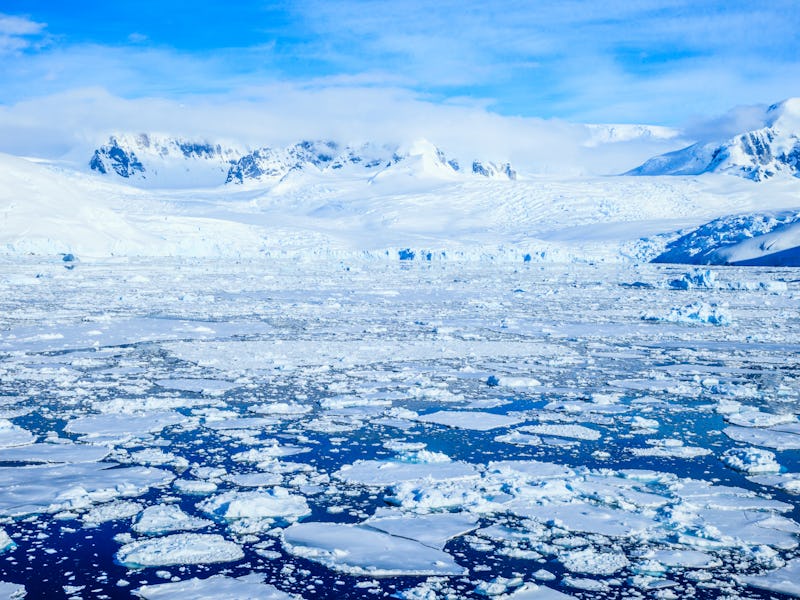Explorers in Antarctica find the fossils of a "totally unexpected" animal
Researchers were shocked to find 40-million-year-old remains.

The Earth's South Pole, known for being a land of penguins, is covered in ice. But it wasn't always this way: Tens of millions of years ago, Antarctica was lush and green — and full of very different creatures.
Recently, while exploring the frigid region for ancient fossils, researchers found the shockingly out-of-place remains of a helmeted frog. It's the oldest-ever discovery of an amphibian and demonstrates that 40 million years ago Antarctica was more similar to present-day South America.
Paleontologist Thomas Mörs and his team were on a mission to find fossils of mammals who inhabited Antarctica before the big freeze. They collected and sifted through samples of sediment from Seymour Island, a process that revealed the teeth and bones of a variety of mammals — including tiny marsupials.
While sorting through their findings, Mörs found something shocking: an ilium — a large hip bone — and an ornamented skull. Both are telltale signs of a helmeted frog.
"I first found the hip bone, and I directly realized that I found an Antarctic frog, the first!" Mörs tells Inverse. "It was a totally unexpected discovery under the microscope."
This finding was published Thursday in the journal Scientific Reports.
This discovery also indicates that Antarctica might have actually played a large role in the evolution of vertebrates, including amphibians, before the mass extinction event that happened at the end of the Eocene.
Before the ice came.
Antarctica, key to ancient frog history — The frozen continent at the Earth's South Pole may have been where some animals originated or dispersed, Mörs says, tens of millions of years ago.
The two fossilized frog bones are around 40 million years old. That helps pin down what the environment was like in Antarctica during that time — six million years before Antarctica froze over permanently.
But the ice was already coming: The researchers found evidence that some glaciers were already present during the days of the helmeted frogs. This suggests that the cold-blooded amphibians, and other vertebrates on the land, were able to survive even as the area became increasingly icy.
The fossilized illium.
Mörs says the research helps to connect some dots about helmeted frogs, too.
Today, helmeted frogs live Australia, New Guinea, and South America, where they are sometimes called Southern Frogs. These are places with climates that are probably similar to what Antarctica once looked like.
This discovery is a sign that helmeted frogs likely formed a single population across Pangea, before the supercontinent split.
"We have now a fossil frog from Antarctica that links the living frogs of the other two continents," Mörs says.
Antarctica, then, may have been an important link — not only between the continents but also between various groups of ancient helmeted frogs.
Abstract: Cenozoic ectothermic continental tetrapods (amphibians and reptiles) have not been documented previously from Antarctica, in contrast to all other continents. Here we report a fossil ilium and an ornamented skull bone that can be attributed to the Recent, South American, anuran family Calyptocephalellidae or helmeted frogs, representing the first modern amphibian found in Antarctica. The two bone fragments were recovered in Eocene, approximately 40 million years old, sediments on Seymour Island, Antarctic Peninsula. The record of hyperossifed calyptocephalellid frogs outside South America supports Gondwanan cosmopolitanism of the anuran clade Australobatrachia. Our results demonstrate that Eocene freshwater ecosystems in Antarctica provided habitats favourable for ectothermic vertebrates (with mean annual precipitation ≥900mm, coldest month mean temperature ≥3.75°C, and warmest month mean temperature ≥13.79°C), at a time when there were at least ephemeral ice sheets existing on the highlands within the interior of the continent.